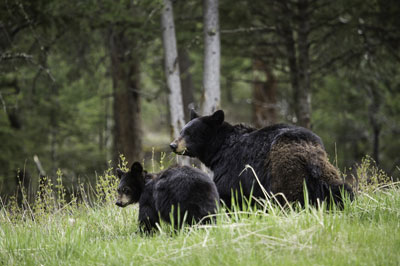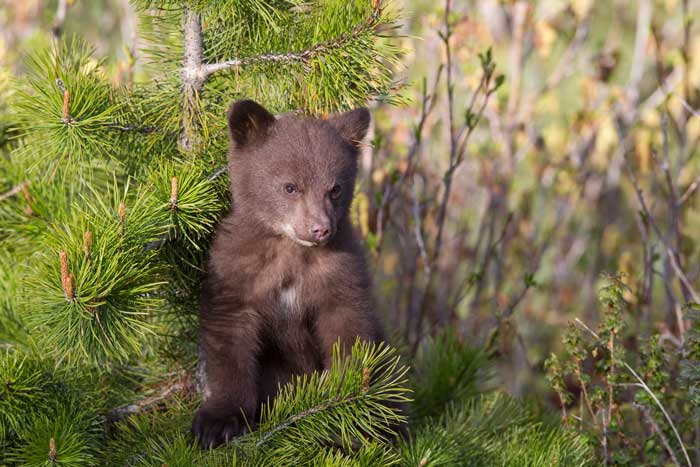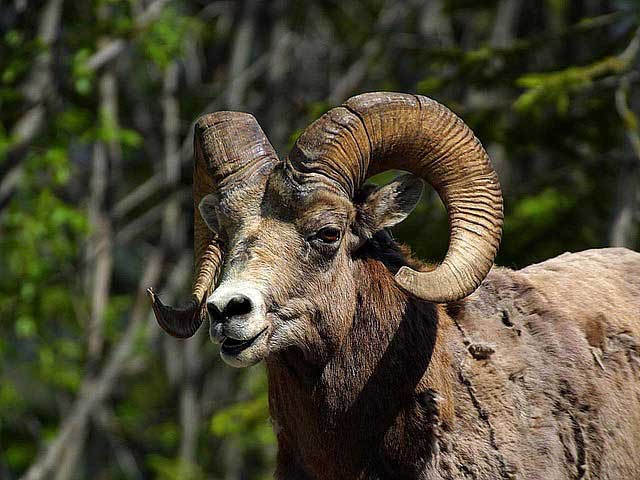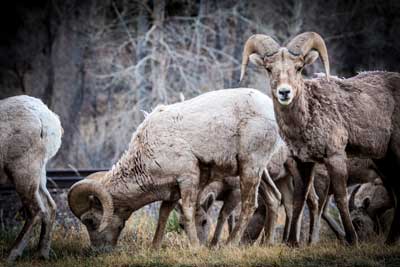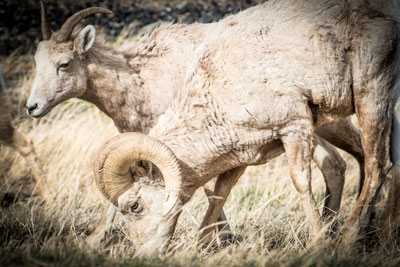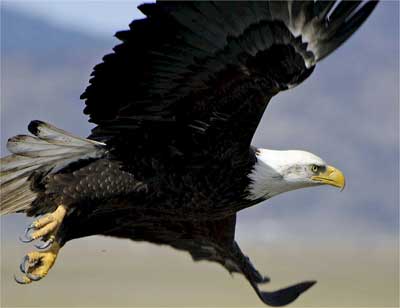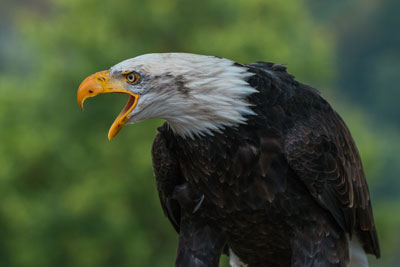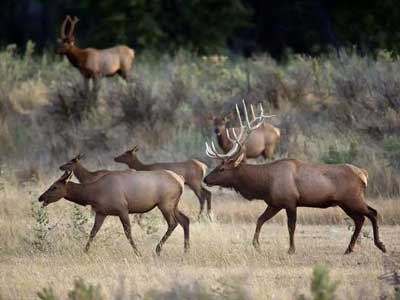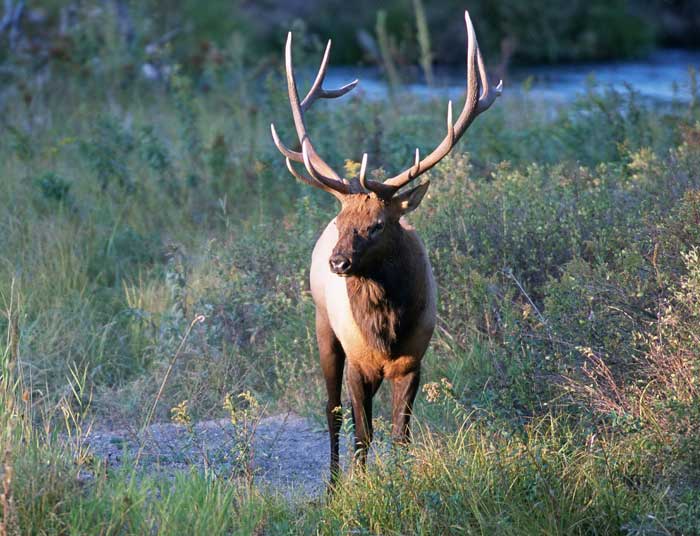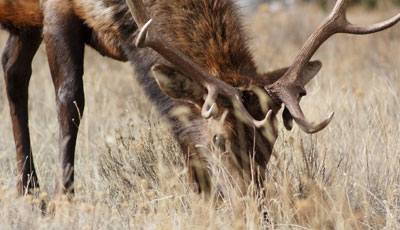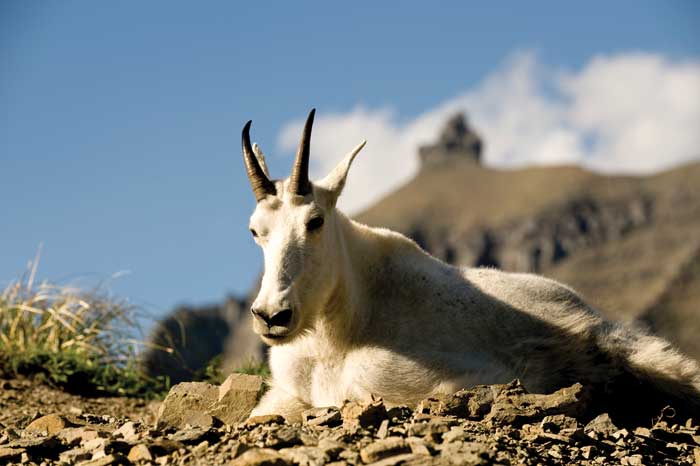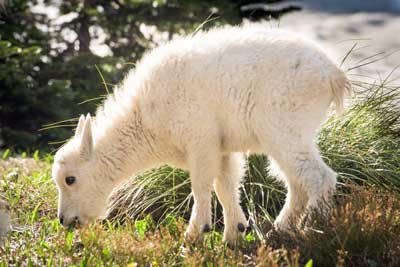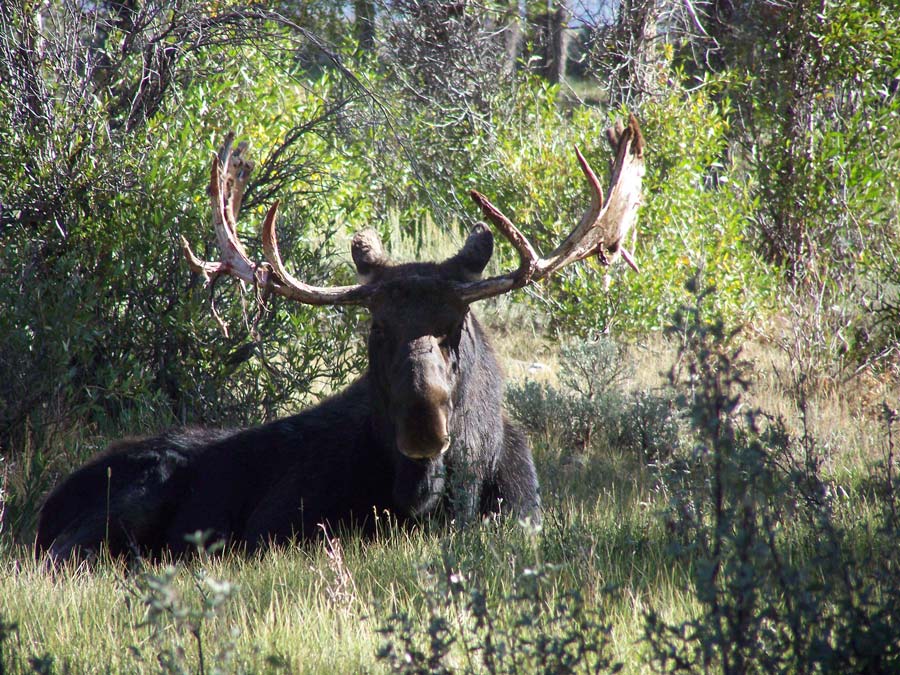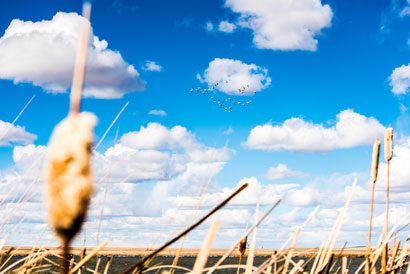Bighorn Sheep
Bighorn sheep range throughout most of central Montana’s mountains. Bighorn sheep are often some of the most viewable wildlife as they often show little regard for onlookers and they are comfortable walking along roads and trails. Despite their disposition, these are still wild animals and should not be approached.
The Best Bighorn Sheep Viewing Opportunities are:
Sun River Canyon, Gibson Reservoir | Located just 45 minutes from Great Falls near the town of Augusta, Gibson Reservoir is home to a large wintering herd of bighorn sheep. This herd is part of the Sun River Canyon herd, which is one of the largest in the United States, numbering near 1,000 animals. From January to April sheep can often be seen near the Gibson Dam parking lot or walking along the dirt roads in this area. This portion of the Bob Marshall Wilderness is located in a snow shadow so, the area frequently has very little snow and can be accessed throughout much of the winter by most vehicles. This is an exceptional viewing opportunity because the area is very scenic and the animals can be photographed or studied at short range from inside a vehicle. For road and area conditions, contact the Rocky Mountain Ranger station located in Choteau, 406-466-5341. Directions: From Augusta, travel 19 miles northwest on the Sun River Road to the Gibson Dam parking lot. Watch for sheep during the last four miles.
Wolf Creek Canyon | I-15 just south of Great Falls offers great bighorn viewing opportunities. This is where Lewis and Clark first encountered the species on their way west. Directions: One of the better viewing locations is reached by taking the Hardy Creek exit (Exit 247) off I-15 and traveling south along Old US 91 (frontage road). Eagles are often seen in this area also.
Banff National Park | Driving TransCanada Highway 1 and the adjacent wildlife viewing loops in May and early June yields exceptional wildlife viewing. Bighorn sheep, and occasionally mountain goats, are often just feet off the road north of Lake Louise. Elk and occasionally moose are often viewed along the road. Bears are also very frequent along the stretch from Lake Louise to Jasper. Directions: From Great Falls, travel Interstate 15 north for 121 miles north to the Canadian border. Continue on Canada Highway 2 for 343 miles to Calgary, Alberta. Take the Trans-Canada Highway 1 exit and continue for 79 miles to the Banff National Park Entrance.
Glacier National Park | Grinnell Glacier Trail is one of the most scenic hiking trails in the US and is also an excellent location for viewing both bighorn sheep and mountain goats. For the best chance of seeing wildlife, leave before the first water taxi. The roundtrip is 7.6 miles without the water taxi, but wildlife viewing is much more prevalent. Visit in early September to beat the crowds. Directions: Grinnell Glacier Trail
Waterton Lakes National Park |These guys like to frequent the Information Centre, Prince of Wales hill, town site, and Red Rock Canyon; and can often be found casually grazing. Directions: Waterton Lakes Visitor Centre, Waterton Trails, Town of Waterton or Red Rock Canyon Parkway


